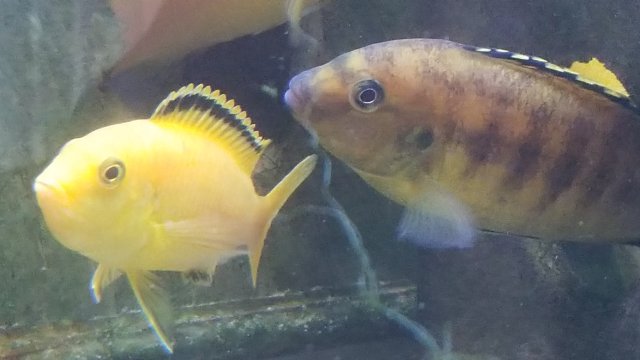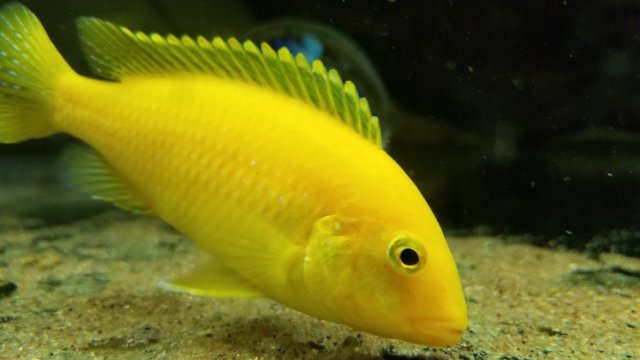Dirty yellow male "yellow lab" normal or not
- Thread starter markstrimaran
- Start date
His mouth is rouphed up from locking jaws with other males. They were all like the female until about 2" long and got intetested in the girls.
My boy girl ratios are way off. I will be sorting them this week end.
Thank
My boy girl ratios are way off. I will be sorting them this week end.
Thank
Not from locking jaws or fighting, the mouth formation is due to the fact that it isn't the same species.
Interesting? Do you have a picture of a good example of an F0 or F1 lineage, of a lions cove, or other Malawi habitat area?
I am about to move fish around, I am going to keep the brightest yellows. Then cull the rest.
I am about to move fish around, I am going to keep the brightest yellows. Then cull the rest.
The pics that I posted in the link below were wild caught fish in a display tank located at the late Stuart Grant's facility, on Lake Malawi. A local collected them along with many others, and sold his first offspring from his breeding group of wild fish to me. I bred them for a number of years. This was the Lions Cove variant. The OP shows pics of a different location on the lake, "Ruarwe". F1 I believe?
http://albertaaquatica.com/index.php?/topic/44988-labidochromis-caeruleus-ruarwe-yellow-labs/&
Labidochromis caeruleus have pointy mouths, even adult males. This is due to their feeding strategy in the lake, their main diet being nymphs, larvae, crustaceans, etc. Not a blunt, algae scraping mouth, as seen by the more herbivorous species of mbuna.
http://albertaaquatica.com/index.php?/topic/44988-labidochromis-caeruleus-ruarwe-yellow-labs/&
Labidochromis caeruleus have pointy mouths, even adult males. This is due to their feeding strategy in the lake, their main diet being nymphs, larvae, crustaceans, etc. Not a blunt, algae scraping mouth, as seen by the more herbivorous species of mbuna.









